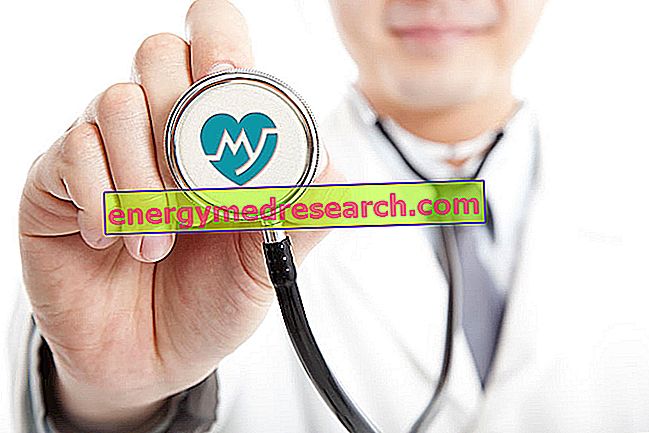Generality
Menopause is a natural event in which the fertile phase of the woman arrives at the terminus. It is characterized by the cessation of menstrual flows, expression of a spontaneous exhaustion of the follicular heritage.

The menopause period is characterized by the absence of menstruation for at least 12 consecutive months, changes in hormonal secretions and other physiological changes.
The cyclical cessation of ovarian activity and fertile season normally occurs around the average age of 50 (+ or - 5 years). However, due to malfunctions of ovarian activity, certain diseases, genetics or particular medical procedures, some women enter menopause early, under the age of 40. This natural or induced condition is known as premature (or premature) menopause . In addition to dealing with hot flashes, mood swings and other typical symptoms that accompany climacteric, many women in early menopause have to cope with further emotional and physical problems (infertility, reduced bone density, metabolic effects that can compromise numerous organs etc.).
Definition
Early menopause coincides with the loss of ovarian activity (and the consequent disappearance of menstrual cycles) before the age of 40. This condition can occur spontaneously or induced, due to bilateral ovariectomy surgery or pharmacological or radiotherapy ovarian suppression. The phenomenon concerns approximately 1-3% of Italian women of reproductive age.
Premature ovarian failure (POF)
Premature menopause is also indicated by the term POF ( Premature Ovarian Failure ); this term refers to an early ovarian failure with amenorrhea, elevated serum gonadotropins (FSH and LH) and hypoestrogenism (reduced plasma estradiol).
In reality, the two conditions are not exactly equivalent:
- Premature ovarian failure can be considered a transitory phenomenon, since in many cases spontaneous intermittent ovarian activity can occur for years, characterized by occasional menstrual periods alternated with others of amenorrhea (absence of menstruation for at least three months). Women with early ovarian failure are still able to produce estradiol (therefore, ovulation can occur) and can sometimes manage to get pregnant.
- The patient with early menopause completely (and permanently) stops menstruating and is therefore unable to get pregnant.
In women with early ovarian failure:
- There are dysfunctional primordial follicles, which are physiologically unpredictable and absolutely irregular;
- Ovulation can occur in 5-10% of cases.
When POF becomes a permanent condition, this is equivalent to early menopause.
Causes
At the basis of the onset of early menopause there is a follicular atresia (arrest of follicle development), generated by multiple causes, some complex and others of a primitive nature.
In two thirds of cases, the early menopause is considered idiopathic : it is not possible to identify the specific cause at the origin of the condition and the karyotype has no alterations (ie there are no specific genetic anomalies that predispose to early menopause).
The possible causes that promote early menopause are:
Genetic anomalies (hereditary)
Some genetic syndromes and chromosomal alterations, evident in the karyotype analysis, are associated with early menopause.
Some examples concern X chromosome mutations and include:
- Fragile X chromosome syndrome, caused by a particular mutation of the FMR1 gene, located on the X chromosome;
- Turner syndrome (45, X), in which menopause precedes menarche and ovarian function is absent;
- Swyer syndrome (pure gonadal dysgenesis): involves gonads that are not well formed and non-functional.
Systemic causes
Inherited enzymatic / metabolic defects can also promote early menopause:
- Galactosemia : systemic pathology caused by the malfunctioning of enzymes that perform the function of metabolizing galactose; consequently, the body is unable to turn it into glucose. Unconverted galactose is believed to produce a toxic effect on the ovaries;
- Congenital adrenal hyperplasia : autosomal recessive disease that affects the adrenal glands and is characterized by disorders in the biosynthesis of steroid hormones;
- Mucopolysaccharidosis : systemic metabolic diseases caused by specific enzyme deficiencies. These pathologies are classified among the heterogeneous group of lysosomal storage diseases.
Autoimmune disorders
Autoimmune diseases that coexist with early menopause can be of two types:
- The immune system erroneously produces anti-ovary antibodies (anti- follicle, anti-corpus luteum, anti-receptors of pituitary hormones, etc.);
- Premature ovarian failure may be associated with other systemic autoimmune diseases, especially of the thyroid type (hypothyroidism) or that affect the adrenal gland, as in the case of Addison's disease (it limits the production of hormones secreted by the adrenal glands). Other autoimmune systemic conditions to be taken into account in the case of early menopause are Crohn's disease, systemic lupus erythematosus and rheumatoid arthritis .
The histological picture that characterizes patients with early autoimmune ovarian failure is the presence of oophoritis (inflammation of the ovary).
Viral and bacterial infections
Certain viral infections, such as cytomegalovirus or mumps, or bacterial ( tuberculosis ) infections are thought to contribute to triggering early menopause in some patients. Mumps, in fact, has among its complications the inflammation of the ovary (oophoritis), which, if it becomes chronic, is able to compromise the functionality of the organ. The same process is triggered by Koch's bacillus, which in addition to affecting the lungs, can trigger genital tuberculosis and consequently oophoritis.
Iatrogenic causes: early induced menopause
In these cases, menopause is precocious due to a therapeutic procedure that can be pharmacological (chemotherapy), radiant or surgical. These treatments produce different consequences on fertility, associated symptoms, etc.
- Pharmacological therapies : early menopause is a condition that can be promoted by chemotherapy. Obviously, this effect depends on many factors, including the woman's age, the types of drugs used and the dosage. Some of the chemotherapy drugs that can promote the condition are: alkylating agents, cyclophosphamide and busulfan ; with minor ovarian toxic effects: methotrexate and fluorouracil . The damage promoted by chemotherapy is gradual and, once the treatment is complete, there may be a complete reactivation of ovarian activity.
- Radiotherapy : the damages induced by radiotherapy are irreversible only if the irradiation is carried out at pelvic level and with a particularly high dosage. Ovarian recovery is therefore possible.
- Surgical menopause : bilateral oophorectomy (removal of both ovaries) and hysterectomy (removal of the uterus) are surgical interventions that favor early menopause. These interventions may be necessary due to the presence of a tumor, ovarian cysts, severe endometriosis or other pathological conditions. Bilateral ovariectomy produces a rapid decrease in circulating levels of ovarian hormones and induces infertility permanently and immediately.
Other causes
Even the wrong lifestyle, especially smoking and alcohol abuse, seems to anticipate the age of menopause. Moreover, it is to consider the existence of a family predisposition, for which the age at which the mother, grandmother or an older sister entered into menopause should always be taken into consideration.
Causes of early menopause | |
Genetic causes | Chromosomal abnormalities / genetic syndromes |
Systemic causes | Galactosemia, mucopolysaccharidosis |
Immune causes | Systemic or organ autoimmune disorders |
Iatrogenic causes | Chemotherapy, radiotherapy, surgical therapy |
Infectious causes | Viral (mumps), bacterial (tbc) |
Surgical causes | Ovariectomy, hysterectomy |
Other causes | Idiopathic causes, lifestyles (smoking, alcohol), family predisposition |
Symptoms
The symptoms are generally difficult to interpret and are often the same as those that accompany natural menopause.
The clinical picture of early menopause may include:
- Sudden cessation or irregular appearance of menstrual flows, with obvious changes in the menstrual cycle: oligomenorrhea (alteration of the rhythm of the menstrual cycle), polymenorrhea (anomalous increase in the frequency of the cycle) and menometroraggie (loss of abundant blood, of a hemorrhagic nature, which occurs in conjunction with menstruation and tends to prolong its duration). The evolution of these signs is the amenorrhea, that is the absence of menstruation for at least three months and, subsequently, their definitive disappearance;
- Premenstrual syndrome aggravation;
- Hot flashes: a sudden sense of warmth, followed by intense sweating, spreads beyond the upper part of the body until the face and neck are reddened
These symptoms are a sign that the ovaries produce less estrogen.
Along with the symptoms listed above, some women may experience:
- Vaginal dryness and pains during sexual intercourse;
- Bladder control problems, such as incontinence or increased frequency of urination;
- Irritability, mood swings, mild depression and insomnia (associated with reduced estrogen levels);
- Transient tachycardias;
- Hair loss, dry skin and weight changes (weight gain);
- Decreased sexual desire.
Early menopause can be emotionally devastating. One of the most common problems a woman has to face is the prospect of not having children: the most immediate consequence of early menopause is infertility, caused by the drastic reduction of follicles and their deterioration.



